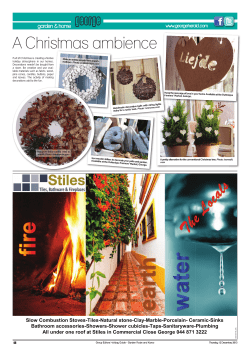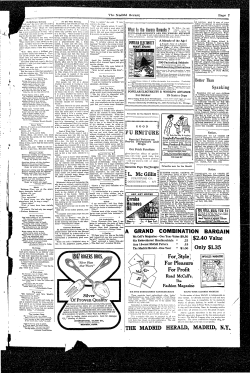
Snoring Does Your Child Snore?
Snoring Does Your Child Snore? If your child has noisy breathing or snoring during sleep, this can be caused by a number of things including untreated allergies, enlarged tonsils, or enlarged adenoids. Snoring usually does not indicate that there are breathing problems when awake. Snoring can be worse if your child is overtired or has a cold. If your child only has noisy breathing in the spring and fall, and you are noticing symptoms of allergies, you should talk to the pediatrician about possible treatment for allergies. Obstructive Sleep Apnea Snoring and noisy breathing during sleep can be an indication that your child is not breathing normally, and can be a symptom of Obstructive Sleep Apnea (OSA). Apnea simply means pause in breathing, and sleep apnea indicates that this occurs during sleep. The hallmark signs of OSA in adults are loud snoring, witnessed apneas and daytime sleepiness. In children, the signs of sleep apnea are more subtle; parents may or may not observe daytime sleepiness. Try to observe your child while she is sleeping. If she has snoring or noisy breathing during sleep occurring three times a week or more for 6 weeks or longer, consult her pediatrician or a board-certified sleep specialist. Other symptoms to look for include: • mouth breathing when asleep or awake • heavy sweating during sleep when the room is not hot • sleeps with her head and neck extended, or in unusual positions • restlessness or frequent awakenings • pauses in breathing followed by a gasp or snorting sound • episodes of bedwetting occuring AFTER the child has been dry at night for 6 months or longer Sleep Medicine &Research Center Untreated sleep apnea can contribute to heart and lung problems, poor growth or obesity, and bedwetting. It also causes poor quality sleep, and may lead to symptoms of sleep deprivation. In children, inadequate sleep is associated with: • difficulty concentrating or focusing during the day • overactivity • sleepiness or lack of energy, despite obtaining the recommended amount of sleep • poor athletic or school performance, learning difficulties • behavioral or social problems In most cases, evaluation for children with suspected OSA includes a complete medical history, a physical exam, a sleep history, and a review of any behavioral or developmental problems. Based on the evaluation, an overnight sleep study may be recommended. A sleep study can help make the diagnosis of sleep apnea, and determine the severity of the problem. Treatment: In children OSA is usually treated with a tonsillectomy and/or adenoidectomy. Occasionally, home nasal CPAP (continuous positive airway pressure) is required, the same treatment used by adults. Prepared by Nancy Birkenmeier, BSN, RN, Sleep Medicine and Research Center, St. Luke’s Hospital. This material may be copied for educational purposes, but acknowledgement must be made to the author and institution. St. Luke’s Hospital • 232 S. Woods Mill Rd. • Chesterfield, MO 63017 • 314-205-6030 • 314-205-6025 Fax O’Fallon Location • 1630 Market Center Blvd., Suite 201 • O’Fallon, MO 63368 • 314-205-6777 • 636-300-3392 Fax www.stlukes-stl.com 1-0811 Other Sleep Disorders Seen in Children Enuresis (Bed Wetting) Primary enuresis, the most common form, occurs when the child is wet most nights since birth; the child has never had a significant period of dryness of more than a month or two. Primary enuresis occurs in approximately 5 percent of children age 6 to10, occurs more often in boys (2:1), and there is often a family history. Treatment: Treatment may be started at age 7 or older, and includes history, physical exam, education, alarm device and occasionally medication for sleepovers or summer camp. Primary enuresis is highly treatable yet often goes untreated. Treatment: Secondary enuresis occurs when a child has had a long period of dryness, a year or more, then begins wetting again. Treatment is usually counseling. Restless Leg Syndrome Characterized by annoying sensations in the legs at rest, mostly at bedtime, relieved with movement. Not a cramp or a pain, but a feeling difficult for individuals to describe. These sensations often keep the person awake. Treatment: Restless legs in children is often associated with low ferritin levels, so treatment often involves a blood test to check for ferritin level followed by iron supplements as needed. Sometimes medication is considered if symptoms severe and not relieved with iron supplements. Nocturnal Seizures A disorder that may occur in children such that seizures only occur during sleep, typically as the child is falling asleep or as he is waking. Treatment: The child outgrows the disorder, but often medication is needed. Delayed Sleep Phase Characterized by a complaint (usually of a teenager) of an inability to fall asleep at a desired time accompanied by a vigorous complaint of not being able to get up in the morning in time for school. The child complains that he or she cannot fall asleep until 1:00 a.m. or later, is often late for school, and usually sleeps very late in the morning (noon or later) on the weekends or whenever given the opportunity. Treatment: Treatment includes education, strict enforcement of desired wake-up time, and often, professional help. Narcolepsy Characterized by daily episodes of falling asleep unintentionally, usually lasting 20 minutes or less. Episodes usually occur two or more times per day despite adequate sleep at night. Symptoms usually begin between age 12 to 20 years (can be seen as early as age 8), but is often not diagnosed until years later. May or may not be accompanied by cataplexy (temporary muscle weakness brought on by emotion), hypnagogic hallucinations, or sleep paralysis. Treatment: Treatment is usually medication (stimulants), education and counseling.
© Copyright 2025





















